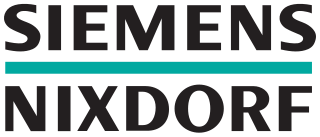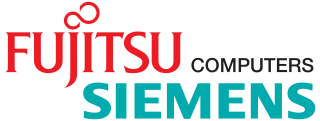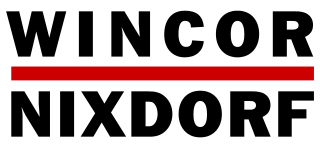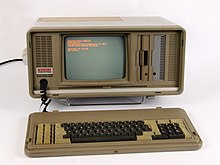
AIX is a series of proprietary Unix operating systems developed and sold by IBM for several of its computer platforms.

Xenix is a discontinued version of the Unix operating system for various microcomputer platforms, licensed by Microsoft from AT&T Corporation in the late 1970s. The Santa Cruz Operation (SCO) later acquired exclusive rights to the software, and eventually replaced it with SCO UNIX.

The Lattice C Compiler was released in June 1982 by Lifeboat Associates and was the first C compiler for the IBM Personal Computer. The compiler sold for $500 and would run on PC DOS or MS-DOS. The first hardware requirements were given as 96KB of RAM and one floppy drives. It was ported to many other platforms, such as mainframes (MVS), minicomputers (VMS), workstations (UNIX), OS/2, the Commodore Amiga, Atari ST and the Sinclair QL.

Siemens Nixdorf Informationssysteme, AG (SNI) was formed in 1990 by the merger of Nixdorf Computer and the Data Information Services (DIS) division of Siemens.
In computing, Interactive System Productivity Facility (ISPF) is a software product for many historic IBM mainframe operating systems and currently the z/OS and z/VM operating systems that run on IBM mainframes. It includes a screen editor, the user interface of which was emulated by some microcomputer editors sold commercially starting in the late 1980s, including SPF/PC.

Coherent is a clone of the Unix operating system for IBM PC compatibles and other microcomputers, developed and sold by the now-defunct Mark Williams Company (MWC). Historically, the operating system was a proprietary product, but it became open source in 2015, released under the BSD-3-Clause license.
Adabas, a contraction of “adaptable database system," is a database package that was developed by Software AG to run on IBM mainframes. It was launched in 1971 as a non-relational database. As of 2019, Adabas is marketed for use on a wider range of platforms, including Linux, Unix, and Windows.

The IBM 3790 Communications System was one of the first distributed computing platforms. The 3790 was developed by IBM's Data Processing Division (DPD) and announced in 1974. It preceded the IBM 8100, announced in 1979.

Fujitsu Siemens Computers GmbH was a Japanese and German vendor of information technology. The company was founded in 1999 as a 50/50 joint venture between Fujitsu Limited of Japan and Siemens of Germany. On April 1, 2009, the company became Fujitsu Technology Solutions as a result of Fujitsu buying out Siemens' share of the company.

Heinz Nixdorf was a German computing pioneer, businessman and founder of Nixdorf Computer AG.

Wincor Nixdorf was a German corporation that provided retail and retail banking hardware, software, and services. Wincor Nixdorf was engaged primarily in the sale, manufacture, installation and service of self-service transaction systems, retail banking equipment, lottery terminals, postal terminals, software and services for global financial and commercial markets.

Applied Data Research (ADR) was a large software vendor from the 1960s until the mid-1980s. ADR is often described as "the first independent software vendor".
Datacom/DB is a relational database management system for mainframe computers. It was developed in the early 1970s by Computer Information Management Company and was subsequently owned by Insyte, Applied Data Research, Ameritech, and Computer Associates International, Inc. Datacom was acquired by CA Technologies, which renamed it to CA-Datacom/DB and later to CA Datacom/DB. In 2018, Broadcom acquired CA Technologies which included the CA Datacom product family. In 2021, Broadcom has dropped the CA and now refers to the product family as Datacom or Datacom/DB.
DOCS was a software package for IBM mainframes by CFS Inc., enabling access to the system console using 3270-compatible terminals.
Edos is a discontinued operating system based upon IBM's original mainframe DOS. The name stood for extended disk operating system. It was later purchased by the West German computer company Nixdorf, who renamed it to NIDOS.

GRASP was a systems software package that provided spooling facilities for the IBM/370 running DOS/VS or DOS/VSE environment, and IBM/360 running DOS or retrofitted with modified DOS.
Easytrieve is a report generator, sold by CA Technologies. Easytrieve Classic and Easytrieve Plus are two available versions of this programming language primarily designed to generate reports and are used by large corporations operating in mainframe, UNIX, Linux, and Microsoft Windows environments.
MainView, currently advertised as BMC MainView, is a systems management software produced by BMC Software. It was created in 1990 by Boole & Babbage and became part of BMC Software's services after they bought out Boole & Babbage in a stock swap.
Peter Pagé was a German software pioneer. He joined Software AG in Darmstadt in 1971 as one of 6 employees and in 1975 became Vice President of Software AG. Page developed NATURAL as the first fourth-generation programming language, which was instrumental in Software AG's success.













